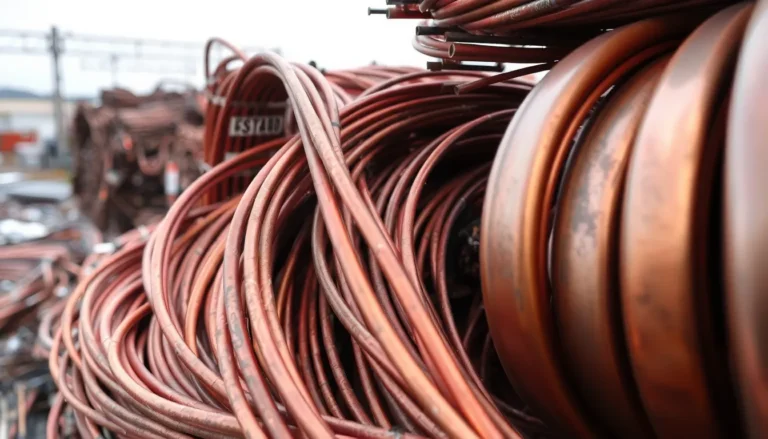In a world where the only thing growing faster than technology is the climate crisis, green technology emerges as the superhero we didn’t know we needed. Imagine a future where your gadgets not only make life easier but also help save the planet. Sounds like a sci-fi movie, right? Well, it’s happening right now!
Table of Contents
ToggleOverview of Green Technology
Green technology encompasses a range of practices, innovations, and products aimed at promoting sustainability and reducing environmental impact. This technology involves renewable energy sources such as solar, wind, and hydroelectric power, which generate energy without depleting natural resources.
Energy-efficient appliances, designed to use less power, significantly decrease energy consumption in households and businesses. For instance, LED lighting consumes up to 80% less electricity than traditional bulbs.
Waste management solutions utilize green technology to reduce landfill usage. Recycling programs and composting systems convert waste into reusable materials, minimizing environmental harm.
Transportation also benefits from advancements in green technology. Electric vehicles emit no tailpipe pollutants, improving air quality and decreasing reliance on fossil fuels.
Construction practices increasingly incorporate sustainable materials and designs. Green buildings, constructed with eco-friendly resources, enhance energy efficiency and reduce greenhouse gas emissions. Some methods include utilizing passive solar design and improving insulation techniques.
Water conservation technologies play a vital role in sustainability efforts. Rainwater harvesting systems and efficient irrigation methods ensure minimal waste of this precious resource.
Innovative startups and established companies continue to invest in green technology, reflecting a strong market growth expected to reach over $2.5 trillion by 2025. This commitment signals a collective shift towards sustainable practices that promote ecological balance and economic development.
Integrating green technology into daily life strengthens environmental resilience while promoting healthier living conditions. Each development in this field contributes positively to mitigating the effects of climate change and fostering a sustainable future.
Benefits of Green Technology

Green technology offers numerous advantages that significantly enhance environmental sustainability and economic growth. Its integration into everyday practices promotes a healthier planet and boosts financial resilience.
Environmental Impact
Green technology leads to substantial reductions in greenhouse gas emissions. Renewable energy sources like solar and wind provide clean electricity, mitigating climate change. Energy-efficient appliances lower power consumption, resulting in decreased demand on power plants. Waste management initiatives, such as recycling and composting, divert materials from landfills, which alleviates ecosystem stress. Additionally, electric vehicles improve urban air quality, benefiting public health and the environment. Overall, the environmental benefits of green technology contribute directly to fostering ecological balance.
Economic Advantages
Green technology stimulates economic growth with its innovative solutions. Investments in renewable energy create job opportunities, with employment in solar and wind energy increasing by more than 200,000 jobs in the U.S. since 2010. Companies adopting energy-efficient practices often see a significant reduction in utility expenses, which improves their bottom line. Government incentives for green technology adoption help businesses transition to sustainable practices without incurring large upfront costs. Market growth in this sector is expected to surpass $2.5 trillion by 2025, underlining its potential to drive economic development. The economic advantages associated with green technology underscore its vital role in creating a sustainable future.
Types of Green Technology
Green technology includes several key categories that focus on sustainability and environmental preservation.
Renewable Energy Sources
Solar energy harnesses sunlight through panels, converting it into electricity. Wind energy uses wind turbines to generate power from natural air currents. Hydroelectric power relies on flowing water resources to produce energy. Each source promotes sustainability and reduces reliance on fossil fuels. In 2021, renewable energy contributed to 20% of total electricity generation in the United States. This figure highlights the growing importance of clean energy solutions in combating climate change.
Energy Efficiency Innovations
LED lighting represents a significant leap in reducing electricity use due to its long lifespan and low power consumption. Smart thermostats optimize heating and cooling systems, maximizing energy savings. High-efficiency appliances also consume less energy while maintaining performance. These innovations contribute to an estimated 10% reduction in overall energy usage in households. Adopting energy-efficient technologies enhances comfort while decreasing utility expenditures.
Sustainable Agriculture Practices
Organic farming relies on natural methods to cultivate crops, avoiding synthetic pesticides and fertilizers. Crop rotation promotes soil health, reducing the need for chemical interventions. Agroforestry integrates trees into farming systems, supporting biodiversity and enhancing productivity. These practices improve food quality while minimizing environmental impact. In 2020, sustainable agriculture was valued at over $300 billion globally, reflecting a rising demand for eco-friendly food production.
Challenges in Implementing Green Technology
Green technology faces several challenges that can hinder its widespread adoption. Addressing these obstacles is crucial for maximizing the benefits of sustainable innovations.
Financial Barriers
High initial costs often deter investment in green technology. Many renewable energy projects require significant capital, making them less accessible for small businesses and individuals. While government incentives improve viability, they don’t eliminate the financial burden. Additionally, funding sources for research and development remain limited, slowing innovation in the sector. This combination of factors can make achieving sustainable energy solutions more challenging than anticipated.
Technological Limitations
Technological constraints pose another significant hurdle for green technology. Current energy storage options, such as batteries, lack the capacity required for large-scale renewable energy integration. Many renewable technologies also depend on consistent environmental conditions, which may not be available in all regions. Integrating smart technology into existing infrastructures often encounters compatibility issues. Moreover, scaling up new technologies for mass production can result in unforeseen challenges. These limitations can delay the transition to greener alternatives, necessitating further research and development.
Future Trends in Green Technology
Innovations in green technology continue to evolve, shaping a sustainable future. One prominent trend focuses on advanced energy storage solutions. Batteries with increased capacity and efficiency will play a crucial role in renewable energy integration, enabling homeowners and businesses to store energy generated from solar and wind sources.
Electric vehicles are gaining traction, projected to account for 30% of all vehicle sales by 2030. Manufacturers commit to developing more affordable models, addressing concerns about initial costs. Infrastructure expansion, including charging stations, supports the growth of electric vehicle adoption.
Smart grid technology represents another significant trend. It optimizes electricity distribution by using data analytics, leading to reduced energy waste. Consumers see benefits through lower utility bills, while utilities enhance grid reliability.
Sustainable agriculture is also experiencing transformation through precision farming. Technologies like IoT devices help farmers monitor crop health and optimize resource use. This practice increases yields while minimizing environmental impact.
Building design is evolving as well, emphasizing eco-friendly materials and energy-efficient designs. Green building certification programs, such as LEED, encourage sustainable architecture. More structures utilize renewable resources, reducing greenhouse gas emissions.
Circular economy principles gain momentum as companies seek reduction in waste. Products designed for reuse and recyclability contribute to sustainable practices. Consumers increasingly favor brands committed to environmental stewardship.
Artificial intelligence and machine learning are driving innovations in energy management. Smart systems adjust energy usage based on consumption patterns, enhancing efficiency. Integrating these technologies across industries reduces operational costs and environmental footprints.
These trends indicate a robust commitment to sustainability across various sectors. The ongoing advancements in green technology underscore a collective effort toward ecological balance and economic development.
The rise of green technology marks a pivotal shift toward a sustainable future. As society embraces innovative solutions, the benefits extend beyond environmental protection to economic growth and improved quality of life. With advancements in renewable energy, energy efficiency, and sustainable practices, individuals and businesses are increasingly empowered to make eco-friendly choices.
Despite the challenges that lie ahead, the commitment to overcoming financial and technological barriers is evident. Continued investment in research and development will pave the way for a greener tomorrow. By prioritizing green technology, society can foster a healthier planet while reaping the economic rewards of sustainability. The future is bright for those who choose to integrate these transformative solutions into their lives and operations.




